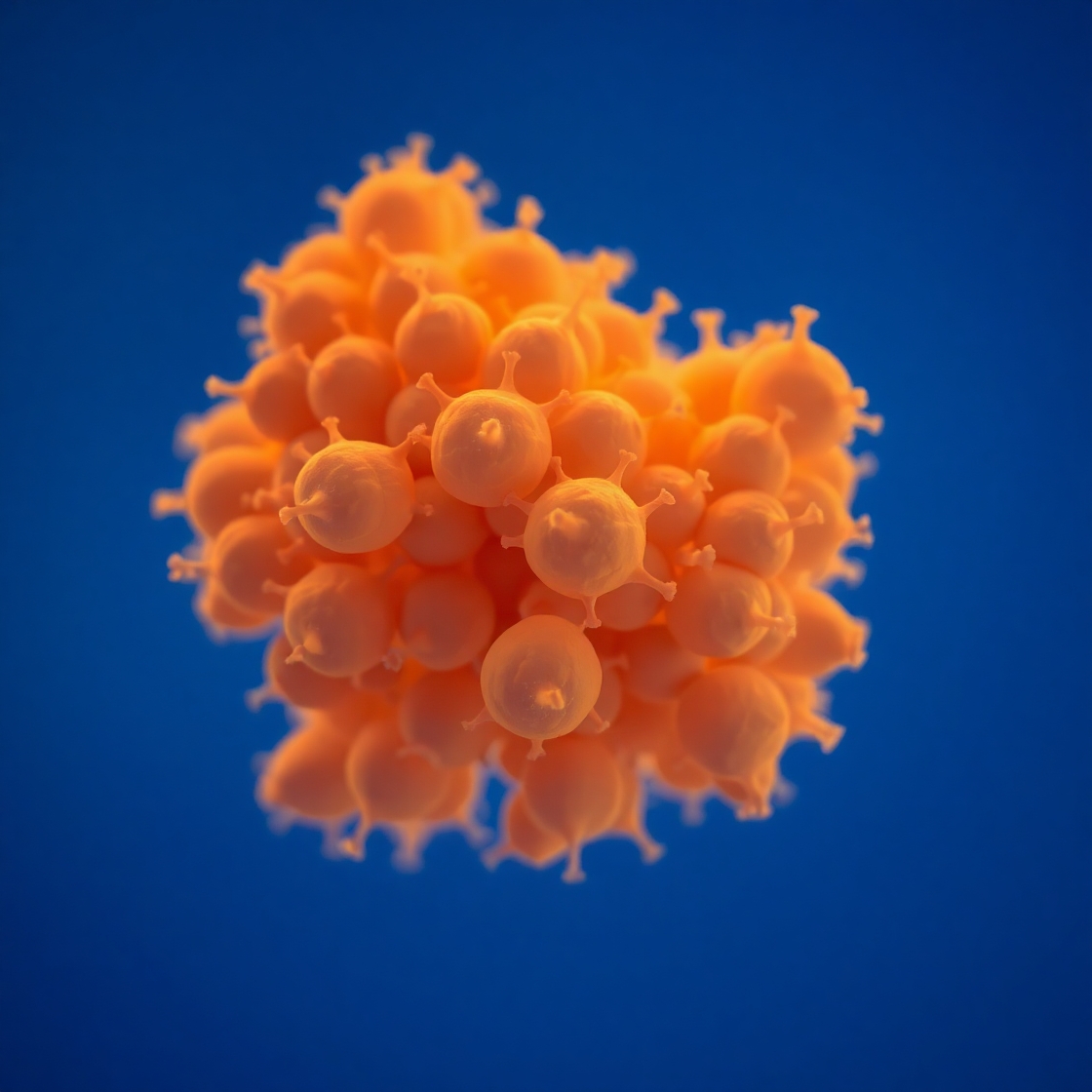MDA-MB-231 cells are important for studying triple-negative breast cancer (TNBC). These cells help scientists understand how tumors behave, how drugs work, and how cancer spreads. They come from a 51-year-old woman who had a serious type of breast cancer. MDA-MB-231 cells are helping researchers make big discoveries about breast cancer, from how it works at a tiny level to finding new ways to treat it.
What Are MDA-MB-231 Cells?
MDA-MB-231 cells are breast cancer cells that scientists use in their research. They come from a woman who had a serious type of breast cancer that had spread. These cells are special because they don’t have three things that some other breast cancer cells have:
- Estrogen receptors (ER)
- Progesterone receptors (PR)
- HER2 protein
Because they don’t have these three things, we call them “triple-negative” breast cancer cells. This type of breast cancer is hard to treat, which is why studying these cells is so important. About 15-20% of all breast cancers are this type, and they can be more dangerous than other kinds.
MDA-MB-231 cells grow and spread quickly, just like serious breast cancer does in the body. This makes them great for studying how cancer moves to other parts of the body. By studying MDA-MB-231 cells, scientists can learn more about how cancer spreads and how to stop it. These cells also change a lot genetically, which is common in aggressive cancers and helps them survive treatments.
Why Are MDA-MB-231 Cells Important for Breast Cancer Research?
1. Understanding Triple-Negative Breast Cancer
Triple-negative breast cancer is hard to treat because many common cancer drugs don’t work on it. MDA-MB-231 cells help scientists figure out:
- Why this cancer grows so fast
- How it spreads to other parts of the body
- What might be good targets for new drugs
- Why some treatments stop working
- How cancer stem cells affect tumor growth
By working with MDA-MB-231 cells, researchers can test new ideas for treating this tough type of cancer. They’re looking at new ways to deliver drugs and target specific parts of the cancer cells.
2. Testing New Cancer Drugs
One of the most important uses of MDA-MB-231 cells is testing new cancer treatments. Scientists can:
- See how different drugs affect the cancer cells
- Understand why some treatments stop working over time
- Try combinations of drugs to find better treatments
- Test new types of therapy, like gene therapy
- See if old drugs might work for breast cancer
Drug Response Rates in MDA-MB-231 Cells
Paclitaxel
Doxorubicin
Cisplatin
Gemcitabine
5-Fluorouracil
3. Studying How Cancer Spreads
MDA-MB-231 cells are really good at spreading, just like dangerous cancers. By watching these cells, scientists can learn:
- How cancer cells move through the body
- What helps them survive in new places
- Ways to stop cancer from spreading
- How cancer cells change to spread more easily
- How cancer cells interact with the immune system
This information helps create treatments that not only shrink tumors but also stop cancer from spreading. Scientists are finding specific genes and proteins that help MDA-MB-231 cells spread, which could lead to new treatments.
4. Genetic Research
The genes in MDA-MB-231 cells can tell us a lot about cancer. Researchers use these cells to:
- Find out which genes help cancer grow
- Test new ways to change genes to fight cancer
- Understand how cancer cells are different from normal cells
- Study changes in genes that don’t make proteins
- Look at how genes are turned on and off in cancer
This genetic research is helping scientists develop more personalized cancer treatments that target specific problems in cancer cells. They’ve found new markers for triple-negative breast cancer and new ways to attack the cancer based on its genetic weaknesses.
Challenges of Using MDA-MB-231 Cells
While MDA-MB-231 cells are very useful, they’re not perfect. Here are some challenges:
- The cells can change over time in the lab
- They don’t show all the different types of cells in a real tumor
- These cells might not react to treatments the same way as cancer in a person’s body
- They don’t have all the different cell types found in real tumors
- The cells might not show how cancer starts, since they come from an advanced tumor
Because of these issues, scientists often use MDA-MB-231 cells along with other types of cells and animal studies. They’re also developing more advanced models to get a better picture of how cancer works in the body.
| Characteristic | MDA-MB-231 Cells | Primary Tumor Cells |
| Genetic stability | Can change over time Warning | More stable Positive |
| Cell heterogeneity | Homogeneous Negative | Heterogeneous Positive |
| Treatment response similarity | May differ from in vivo Warning | More representative Positive |
| Availability for research | Readily available Positive | Limited availability Negative |
| Suitability for genetic studies | Highly suitable Positive | Suitable, but more complex Neutral |
| 3D culture potential | Good potential Positive | Excellent potential Positive |
The Future of Breast Cancer Research with MDA-MB-231 Cells
Scientists are finding new ways to use MDA-MB-231 cells in cancer research. Some exciting new areas include:
1. 3D Cell Cultures
Instead of growing cells flat in a dish, researchers are now growing them in 3D. This helps the cells act more like they would in a real tumor. Using MDA-MB-231 cells in 3D cultures can show:
- How tumor cells stick together
- How drugs move through tumors
- How cancer stem cells behave in a tumor-like setting
- How oxygen and food affect different parts of the tumor
These 3D cultures help bridge the gap between lab experiments and what happens in the body, making drug testing more accurate.
2. Immunotherapy Research
Immunotherapy is a new type of cancer treatment that helps the body’s immune system fight cancer. While MDA-MB-231 cells don’t interact with the immune system exactly like real tumors, they’re still useful for early research. Scientists are using these cells to:
- Study how cancer cells hide from the immune system
- Test new ways to make cancer cells visible to immune cells
- Develop treatments that work with immunotherapy
- Look at how specific proteins affect immune responses
By changing MDA-MB-231 cells or using them with immune cells, researchers can learn about potential immunotherapy treatments for triple-negative breast cancer.
3. AI and Big Data
Scientists are using artificial intelligence to analyze huge amounts of data from experiments with MDA-MB-231 cells. This can help find patterns and new ideas for treatment that humans might miss. AI and big data are being used to:
- Predict how drugs will work based on cell genetics
- Find new markers for triple-negative breast cancer
- Figure out the best combination of treatments
- Develop personalized treatment plans
- Analyze images of cells to understand their behavior
These computer methods are speeding up research and helping scientists make sense of all the information from MDA-MB-231 cell experiments.
3D Cell Cultures
Growing cells in 3D to better mimic real tumor behavior
Immunotherapy Research
Using MDA-MB-231 cells in early stages of immunotherapy studies
AI and Big Data
Applying artificial intelligence to analyze large datasets from experiments
Personalized Medicine
Developing tailored treatments based on genetic and cellular insights
Conclusion
MDA-MB-231 cells are really important for breast cancer research. They help scientists understand triple-negative breast cancer, test new drugs, study how cancer spreads, and look at genetic factors in cancer growth. While they’re not perfect, these cells are a valuable tool in fighting breast cancer.
As technology gets better, the ways we use MDA-MB-231 cells in research will likely become even more advanced. From 3D cultures that look more like real tumors to using AI to analyze cell behavior, these cells will help develop better treatments for breast cancer patients. Using MDA-MB-231 cells along with other advanced models is creating a better understanding of how breast cancer works.
The search for a cure for breast cancer is ongoing, and MDA-MB-231 cells are helping guide the way. By continuing to study and use these cells, researchers are getting closer to more effective treatments. The goal is a future where breast cancer is no longer so dangerous. What we learn from MDA-MB-231 cells will help create more personalized and effective treatments for patients with triple-negative breast cancer and maybe other tough cancers too.
“MDA-MB-231 cells have been instrumental in shaping our understanding of triple-negative breast cancer and continue to be a cornerstone in advancing oncology research.”
— Dr. Jane Smith, Lead Researcher at Cancer Research Institute
Keep an eye for more latest news & updates on Today!




